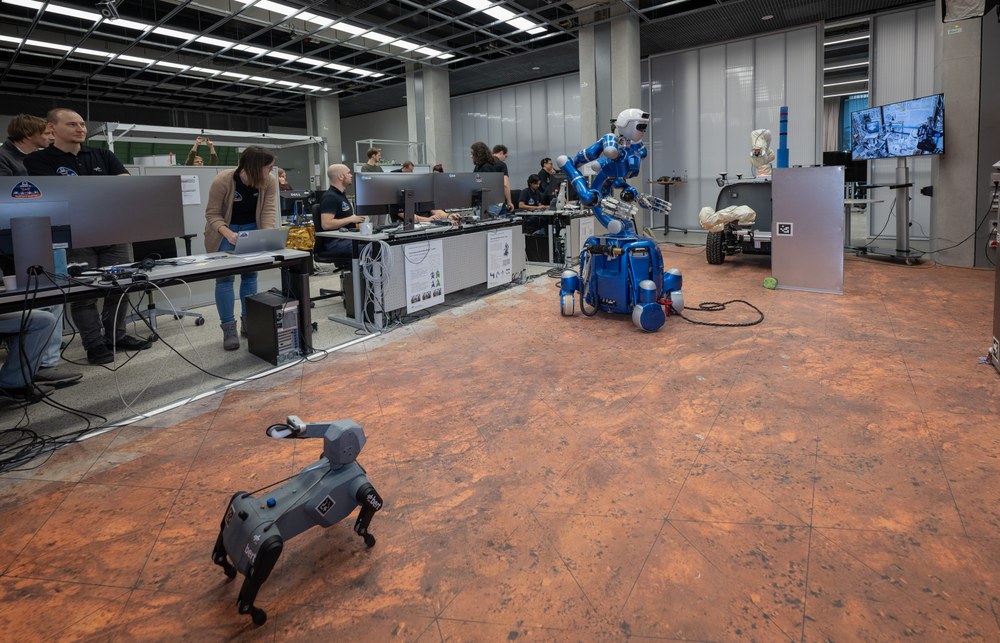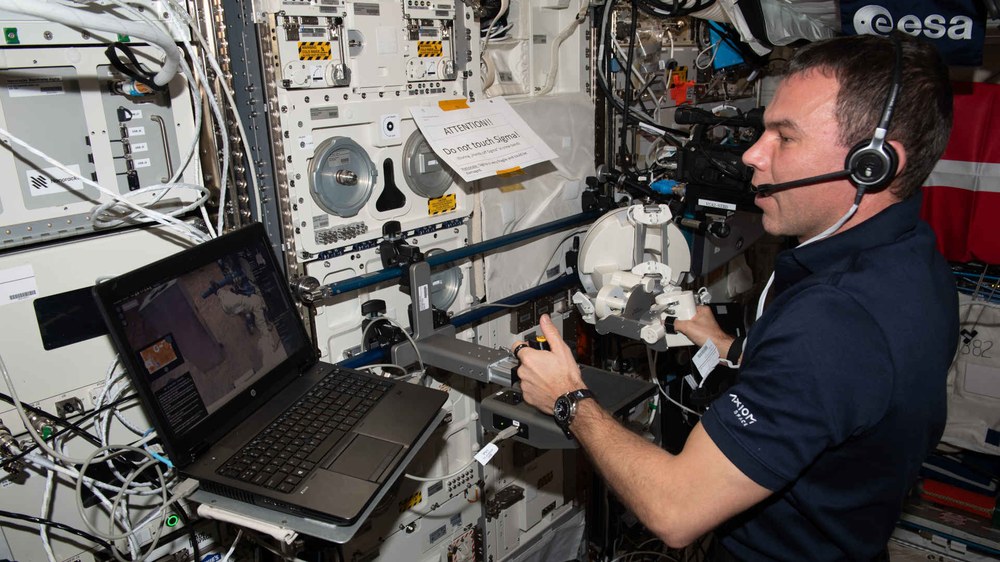Four-legged friends and other robots: ESA astronaut tests avatar control between ISS and Earth


- Swedish ESA astronaut Marcus Wandt controls various robotic systems on Earth from the ISS for the 'Surface Avatar' experiment.
- The researchers want to use the experiment to find out how time delays affect the remote control of robots.
- Focus: Space flight, exploration, Moon, Mars, ISS
Concentrated silence reigns in the Mars laboratory of the German Aerospace Center (Deutsches Zentrum für Luft- und Raumfahrt; DLR) in Oberpfaffenhofen – the connection to the International Space Station ISS has been established. The 'Surface Avatar' experiment has been given the green light and Swedish ESA project astronaut Marcus Wandt is in orbit in the Columbus module commanding the first of three robots in the Earth-based Mars laboratory. Building on experiments carried out in July 2023, developers are testing in particular how time delays affect the control of robots during space missions. In the future, collaborative, intelligent robots will support spacefarers on exploration missions to the Moon or Mars.
The experiment's research team is developing innovative technologies that will allow humans to control several robots with precision, have them act semi- or fully autonomously and have different robots perform a task together. The Surface Avatar project is being led by the DLR Institute of Robotics and Mechatronics and is being carried out in collaboration with the European Space Agency (ESA) and the German Space Operations Center (GSOC).
World premiere and a true teamwork challenge
In a new and even more complex experiment, the dog-like DLR robot Bert joined the team – a world first in telerobotics. Until now, only wheel-driven robots have been controlled remotely from space by astronauts. But Bert has mastered several types of gaits and, thanks to his leg-based locomotion, can even explore rough terrain, including small caves, that his rolling teammates cannot reach. ESA project astronaut Marcus Wandt let his four-legged friend explore the lab's surroundings independently and monitor the terrain with his camera eyes. With Bert's 'running' information in the background, Wandt turned his attention to the other robots: DLR's humanoid service robot Rollin' Justin and ESA's Interact Rover.
Even between humans, cooperation is complex. Agreements have to be made and mutual intentions understood. This is a particular challenge when different robots have to form a team and successfully complete a task together. When building a habitat, for example, combining the different skills of several robots is very helpful. In the first experiment of its kind, DLR's humanoid robot Rollin' Justin and ESA's Interact Rover mastered such a task and jointly installed a short pipe representing a scientific measuring device. Under the command of astronaut Wandt, Rollin' Justin used his dexterous hands to safely grasp the pipe and carefully guide it to the measuring point. Wandt then used the Interact rover's remote control to install the pipe held in position by Justin.
Cutting-edge space research
"Future stations on the Moon and Mars, including astronaut habitats, will be built and maintained by robots operating under the guidance of astronauts. Our latest control and AI algorithms enable a single astronaut to command an entire team of different robots. Our DLR-ESA team is a world leader when it comes to this technology," says Alin Albu-Schäffer, Director of the DLR Institute of Robotics and Mechatronics.
So that the robotics team could concentrate on their scientific tasks and maintenance scenarios during the two-and-a-half-hour experiment, the Columbus Control Centre in Oberpfaffenhofen kept an eye on other activities on board the ISS and ensured its reliable operation. Surface Avatar is one of a total of ten German experiments being carried out by ESA project astronaut Marcus Wandt as part of his Axiom Space mission Muninn.

